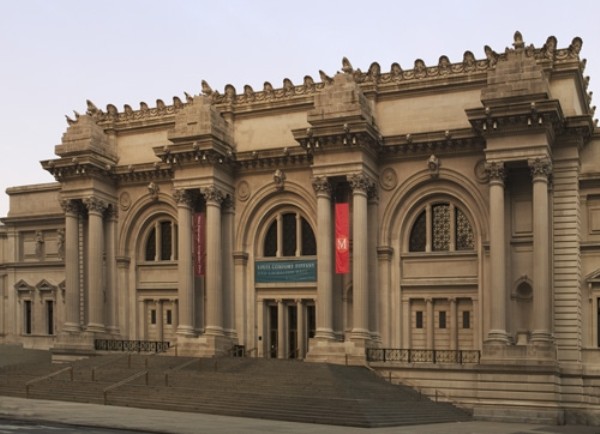The Met Presents Expressive Art of Japanese Calligraphy on View, 8/17
Handwriting was thought to reflect one's personality in the East Asian tradition, but not in the sense of Western graphology or «handwriting analysis.» Rather, through copying of revered models and through creative innovation, handwriting style conveyed one's literary education, cultural refinement, and carefully nurtured aesthetic sensibilities. Showcasing more than 80 masterworks of brush-inscribed Japanese characters-some serving as independent works of art and others enhanced by decorated papers or by paintings-the exhibition Brush Writing in the Arts of Japan takes a close look at the original gestural movement marked in each work, by analyzing the applied pressure, speed, and rhythm that are said to be the reflection of the artist's state of mind. The works on view, dating from the 11th century to the present, demonstrates that beauty was often the supreme motive in the rendering of Japanese religious or literary texts, even at the expense of legibility. These works are complemented by some 100 ceramics, textiles, lacquers, woodblock prints, and illustrated books that are closely related to the art of brush writing. The exhibition is made possible by The Miriam and Ira D. Wallach Foundation.
The art of brush writing in the East Asian tradition both encompasses and transcends the Western aesthetic concept of «calligraphy,» a word derived from Greek that literally means «beautiful handwriting.» Japan inherited from China a fascination with the artistic potential of inscribing characters with flexible animal-hair brushes, while developing a distinctive system of inscription for rendering poetry and prose written in the vernacular. In the case of East Asian brush writing, the original gestural movement-the speed, rhythm, and pressure-of the inked brush across paper or silk can be transmitted across centuries to the contemporary viewer.
Integrated with the permanent installation of ancient Buddhist and Shinto sculpture in the Arts of Japan galleries, the opening section of the exhibition introduces a splendid array of religious narrative paintings and mandalas that juxtapose text and image to convey sacred messages. It was believed that copying such narratives, or sutras, or having them copied would bestow religious merit; therefore, no expense was spared in creating editions of sutras. The magical efficacy ascribed to the transcription of Buddhist teachings in ancient Japan laid the foundation for the reverence of the written word. Works on view in this section includes essential Buddhist scriptures-transcribed in glittering gold and silver pigments on indigo dyed papers and accompanied by shimmering frontispieces-that attest to the importance placed on the brush-written word.
 The Met Presents Expressive Art of Japanese Calligraphy on View, 8/17
The Met Presents Expressive Art of Japanese Calligraphy on View, 8/17Source: www.broadwayworld.com



